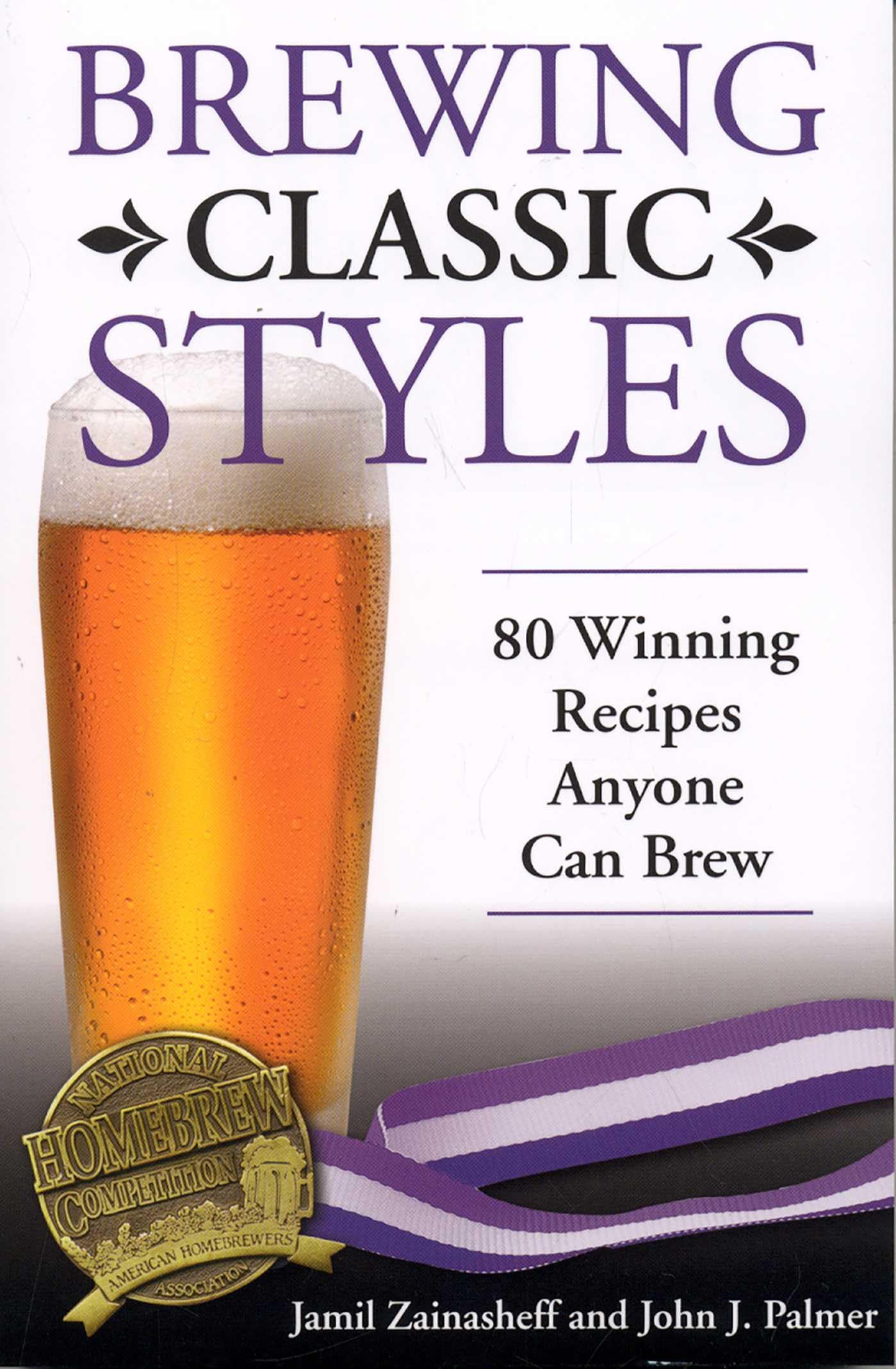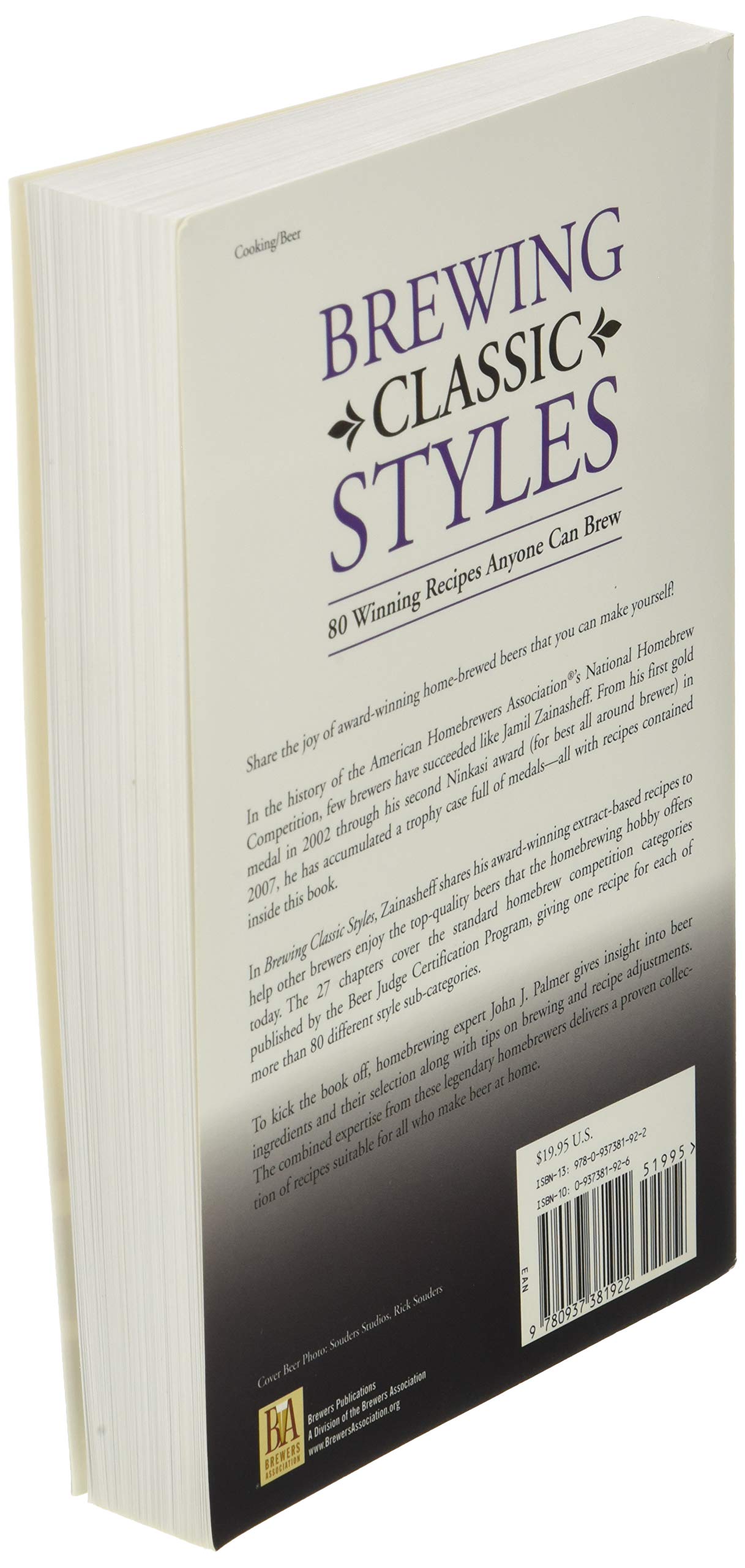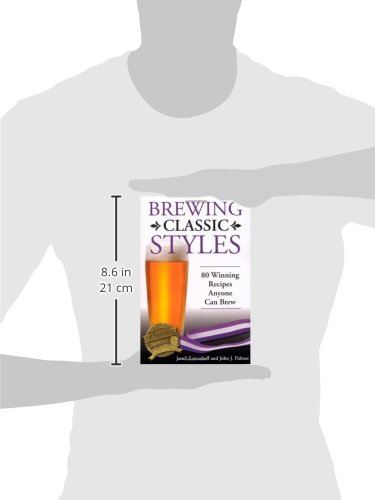Servicios al cliente
Sobre nosotros
Copyright © 2025 Desertcart Holdings Limited
Desert Online General Trading LLC
Dubai, United Arab Emirates






Brewing Classic Styles: 80 Winning Recipes Anyone Can Brew



A**E
A Must Own
Considering the celebrity status of both authors, the homebrewing community knew that this book was going to be big long before it hit bookstore shelves. As expected, Jamil and John delivered up a treasure trove of information that should be in every homebrewer's library. It is not, however, intended for the novice brewer. The authors assume that you have knowledge of basic extract brewing techniques, and it would be best to have a working knowledge of all grain brewing as well before you attempt your own versions of these award-winning recipes. I do feel that the book's title is a bit misleading: it would have been better to call it "Brewing and Appreciating Classic Styles." Anyone wanting to be a beer judge or at the very least a proper beer snob should read this book. The style notes that precede each recipe are invaluable in helping the reader to understand the nuances of all the BJCP style categories.Even if you take away the entire collection of award winning recipes alluded to in the book's title, I would still feel like I got my money's worth out of it. The first four chapters cover some brewing basics, and do an outstanding job of it. Many of the pitfalls of making merely good beer are exposed, leaving the reader with a better understanding of how to make great beer. As if all that valuable information was not worth your money, they threw in four appendices and a glossary. All of this is written in a very accessible style with a minimum of technical jargon. Appendix A, "Pitching Yeast Rates and Starters" is one of the best treatments of the topic that I have ever seen for those of us that did not major in microbiology.Then we get down to the meat of the book, the recipes. Each recipe is carefully crafted to result in a beer that is both of excellent quality and fits the BJCP style guidelines for the style it represents. The authors do not leave you with just a grain bill and a list of hops and boil times. The process for each recipe is carefully covered, and the subtle nuances of brewing each style are covered in sufficient detail to result in easy duplication. Another unique aspect of these recipes is that they are extract based, with all grain options given as well. No matter how unsophisticated your brewery, you can brew excellent examples of every style.Just to show that Jamil and John did not pay me to write what would otherwise be a gushing review, I must find some fault. My only complaint is that each recipe is designed for a seven-gallon boil. This is standard stuff for all grain brewers, but beyond the limit of many extract brewers who use an old 5-gallon enamel canning kettle for brewing. The author's do, however, consider the plight of the volumetrically challenged brewer by giving easy to follow instructions on how to downscale the recipes for a 3-gallon boil that you can do on the kitchen stove with grandma's canning kettle.Simply put, this is probably the most important homebrewing book to come out since John's How to Brew. So if you do not own a copy of How to Brew, get that first and learn your basic brewing skills. Once you have the fundamentals down, it is time to get a copy of Brewing Classic Styles and expand your brewing [email protected]
B**M
Good technique book, great recipe book
After reading through Palmer's "How to Brew" several times, and then trying to make the leap from extract to all-grain brewing without kits, I decided I needed a recipe book. My recipes were okay, but I was looking for something really great.I was recommended this book, and am really pleased with it. Palmer provides the technical details for things like amount of priming sugar to add to achieve a certain level of carbonation, and how large of a yeast starter to make, and Zainasheff provides information about what to keep in mind when brewing a certain type of beer, as well as at least one recipe for each type. Each recipe has both an extract and all-grain method, as well as information about mashing, the type and amount of yeast to use, and fermentation temperature and duration.I'm impressed by the range of recipes in this book. You might not find a recipe for the "Jalapeno-coffee stout" you really want to make, but there will be enough information and instruction in this book for you to figure it out and produce something decent. For instance, I really wanted to make a blueberry blonde ale. This book didn't have that recipe, but it did have a blonde, and it had instructions in the fruit beer section on how to make a fruit beer. I used the blonde recipe, followed the fruit instructions, and made an amazingly good beer. I'm really impressed with it.Other recipes from this book I've tried without modification, and all have ended up stellar. My favorite so far is the Special/Premium Bitter. Fantastic beer.If you're looking for a recipe book, I'd recommend this one. If you're looking for something on the mechanics of brewing, I recommend "How to Brew" by Palmer.
M**Y
A good starter book and a reference book for any level of brewer.
First, Jamil Zainasheff shared his award winning recipes. His recipes fits the style of the beer. Not really what he imagines the beer should taste like, but what the guidelines state what the beer style should taste like.Second, you have to know the style guidelines if you want to enter competitions. It is also useful to modify the recipes for your own personal enjoyment. I do not compete in competitions. I have used this book and modify different recipes to fit my taste. Several of his recipes are just awesome. People always comment that my kegerator has better beer then most bars. :) Thanks Jamil!!!!Third, He also describes the flavors and hints on brewing with the recipe. He talks about do's and don'ts when brewing to a certain style. He is sharing his brewing knowledge and it is full of wisdom.One con is that it is for extract with a side mention of all grain. To remedy this problem. Use an online tool or Beersmith program to make sure the base malts measure up to the extract. Its a minor con because any experience brewer knows that efficiency of mashing varies widely on the all-grain brewing setup of the brewer.As a recipe book goes, its 4 stars. Given the rarity of good beer brewing recipe books, it has to be 5 stars ( or 6 stars, hehehe).
Trustpilot
Hace 1 mes
Hace 3 días
Hace 2 meses
Hace 1 mes